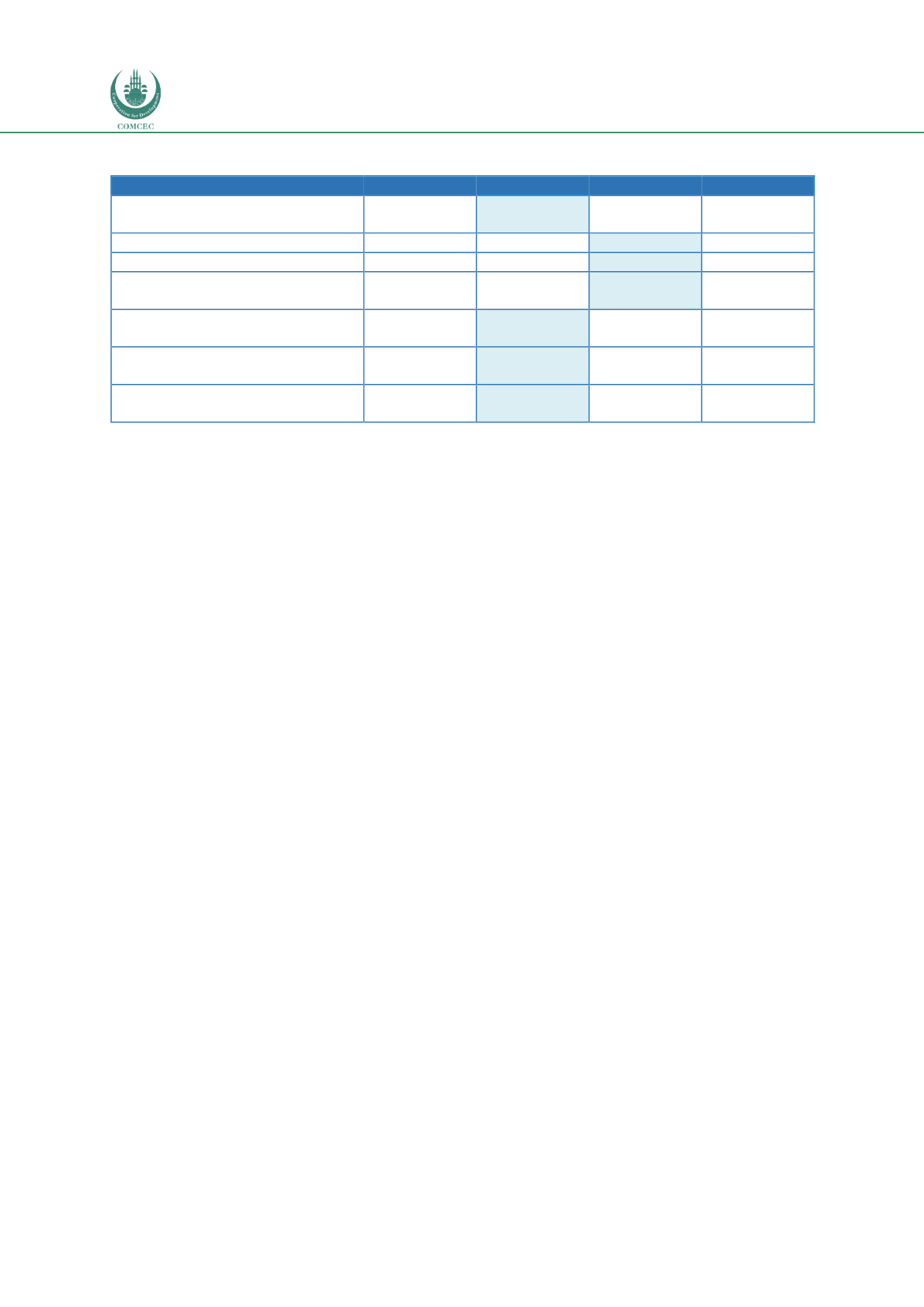

Governance of Transport Corridors in OIC Member States:
Challenges, Cases and Policy Lessons
54
Table 3.9 SEETO corridor governance levels
Governance domains
Information
Coordination Cooperation
Integration
Corridor objectives and political
support
Legal framework
Institutional framework
Infrastructure: financing, planning
and programming
Corridor performance monitoring
and dissemination
Corridor promotion and
stakeholder consultation
Capacity building: technical
assistance and studies
Source: consortium.
3.2.10
Conclusion
Some lessons can be learned by the OIC member countries from SEETO. The first relates to how
countries that share a history of internal disputes can successfully collaborate at a regional level. The
common transport (corridor) agenda, which literally connects countries, provides a strong basis for
collaboration.
In addition, certain governance domains are developed at certain points in time in the development of
the corridor. After the signing of a MoU in 2004, SEETO developed slowly but steadily. Once the
secretariat was established in Serbia, the main topics for transport policy integration focussed on data
harmonisation and developing a methodology for priority investments. Once hard infrastructure
projects were on its way and detailed data could be collected on the performance of route segments or
transport modes, the way was paved to gain more support for demanding, but equally rewarding soft
infrastructure measures. After the development of a SEETO Priority Rating system and the release of
the third version of SEETO’s information system in 2012, SEETIS 3, the focus of the SEETO yearly
published Multi-Annual Plans slowly turned towards addressing non-physical barriers, such as
developing intelligent transport systems, harmonizing border crossing procedures, implementing
road safety guidelines or a common infrastructure maintenance plan. The trend towards
harmonisation standards and procedures was propelled forward in 2017 after the member states
signed the Transport Community Treaty; the successor of the MoU from2004. The new treaty requires
more political commitment by the members and a redesign of the corridor secretariat, giving it more
tasks and responsibilities.
The process of SEETO’s development suggests that in the cooperation stage, it is beneficial to focus on
systems of data collection to track corridor performance. However, the secretariat requires enough
capacity in the first place to achieve these goals. Then, the whole corridor is elevated to the next level
by signing a treaty that requires more commitment on all governance domains.
Another key lesson to be drawn from SEETO is that support by an international organisation
significantly speeds up the integration process. The knowledge, resources and the role of independent
mediator are valuable for consensus building. SEETO cannot be seen separate from the EU. The EU
initiated its establishment, takes part in every governance institution, provides technical assistance
and the recently established Connectivity Agenda is crucial for the future development of the network.
By 2013, the SEETO network was formally acknowledged by the EU as the indicative extension of its
















